- Lumber Guide: Sycamore Wood Uses - December 8, 2023
- Stihl MS291 Review and Buying Guide - December 7, 2023
- Mulberry Wood Uses: It’s Not Just for Silk Worms! - October 25, 2022
Who doesn’t love silk clothes? I’m sure most of us have a silk dress or shirt in our wardrobe.
However, how many of us know about how silk is made? The untiring effort of silkworms nibbling the leaves of the mulberry tree to excrete the finest fibers known to man is itself an interesting process, but that’s not why we’re here.
The mulberry tree is cherished for its leaves and the fruit it bears, but for woodworkers and foresters like me, the versatile wood of this deciduous tree is just as impressive.
In this guide, the wood of the multipurpose Mulberry tree is explored to its fullest. The guide provides insights on the Mulberry wood uses characteristics, availability, and things to consider while working with mulberry wood.
So let’s dig in deeper, starting with the basics.
What is Mulberry?
Mulberry is a vigorous deciduous tree species inherent to the warm temperate and subtropical regions of the world. The tree is cosmopolitan and provides durable miraculous wood with a good natural luster.
About 68 species of the genus Morus are known, the majority of them occurring in Asia, with over a thousand cultivars in China alone. Some of the most common varieties of Mulberry are the North American Morus rubra (Red Mulberry, the tallest mulberry variety) and the Asian-originated Morus alba (White Mulberry, vigorous and adaptable), and Morus nigra (Black Mulberry, which cannot tolerate cold winters),
Mulberry prefers a neutral (pH), well-drained loam soil and full sun. However, its hardy nature allows it to survive in degraded, water-logged soils and drought conditions. Fruiting can occur even in partial shade. Also, mulberry trees can resist pests and diseases without any form of chemical spraying and flourish with minimum fertilization, irrigation, and pruning.
Identification of Mulberry Trees
Variation is observed in the wood texture and appearance of different Morus species.
Tree Size and Shape
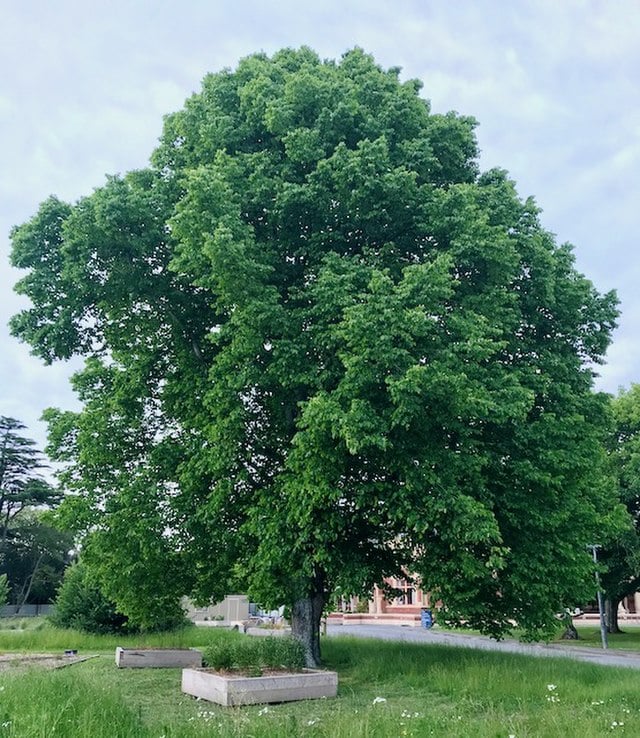
The size of the tree ranges from large shrubs to 75ft. tall trees. These are characterized by a spreading or weeping tree form which requires at least 25 ft. between full-size mulberry trees. The trunk diameter can range from one to one and a half ft.
Wood Color, Appearance, and Characteristics
Red mulberry, which is golden brown when young, turns a darker brown to medium reddish shade with time, while the outer layer of sapwood can be pale. Black mulberry is known for its characteristic uniformly hairy lower leaf surface, and white mulberry can be identified by its rapid release of pollen. The naturally shiny wood is characterized by a straight grain with a uniform medium texture resulting in a very rot-resistant wood against both insects and weathering. Little cracks that appear upon aging are quite common. Also, the fruity smell from the ripe berries contributes to the pleasant fragrance imparted by mulberry wood, especially when burned.
Bark
The thin bark of the young tree is light brown to grey, with smooth, shallow furrows and narrow ridges in comparison to the coarse gray bark with curving deep furrows on very old trees.
Leaves
The fine silk fibers produced by silkworms are the result of feeding off the mulberry leaves. Fruit color is an insufficient means to distinguish mulberry species but the leaves can tell them apart. The markedly rough upper surface of red mulberry contrasts with the gleaming, smooth, and polished feel of the white mulberry leaves, which are preferred by the silkworms. The leaf color is usually shiny, dark green, and smooth but can be yellowish green. The juvenile growth is often lobed, unlike most other leaves, which are not lobed.
Flowers
The axils of the current season’s growth hold short, green, pendulous catkin flowers, while the spurs bear flowers on older wood. Trees can bear male or female flowers or both, but only female trees bear fruit. A male tree is not required for fruit. However, one or several trees are required for seeded fruit.
Fruits
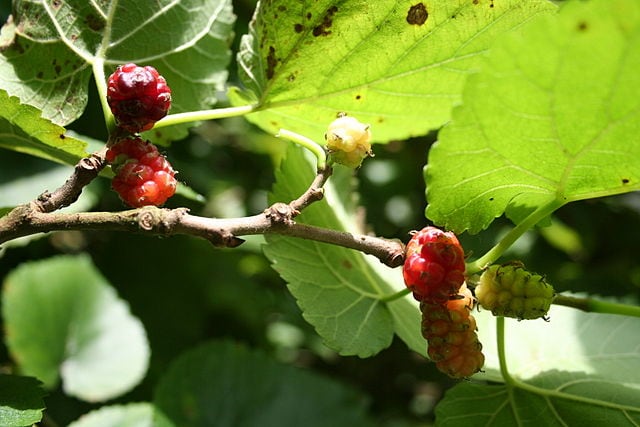
Mulberry trees are consistent annual producers of abundant, very sweet, soft, juicy, blackberry-sized fruit that ripen from mid-spring to late summer, depending upon the variety. Red mulberry fruits are deep red, almost black, while the white ones are white, lavender, or black. Black mulberry often stains hands when picking them. The fruit size may be 3 to 6 cm in length.
The ease of its cultivation and consistent productivity has not only heightened its popularity among farmers but is also relished by the kids. Mulberry fruits can be dehydrated, frozen, or processed into wine and other products like jams and jellies.
Wood-working Characteristics
When choosing wood for work, every worker wants one that requires less labor but offers a great finish. Mulberry wood is one of such kind. Here are some of the amazing wood-working characteristics of mulberry:
Workability
The durability of the mulberry wood is praiseworthy, along with its relatively soft nature, which permits easy handling with both machine and hand tools. It can conveniently be split into kindling and smaller pieces of firewood. Its suitability for a wide range of projects is discussed later in the guide.
Natural Color
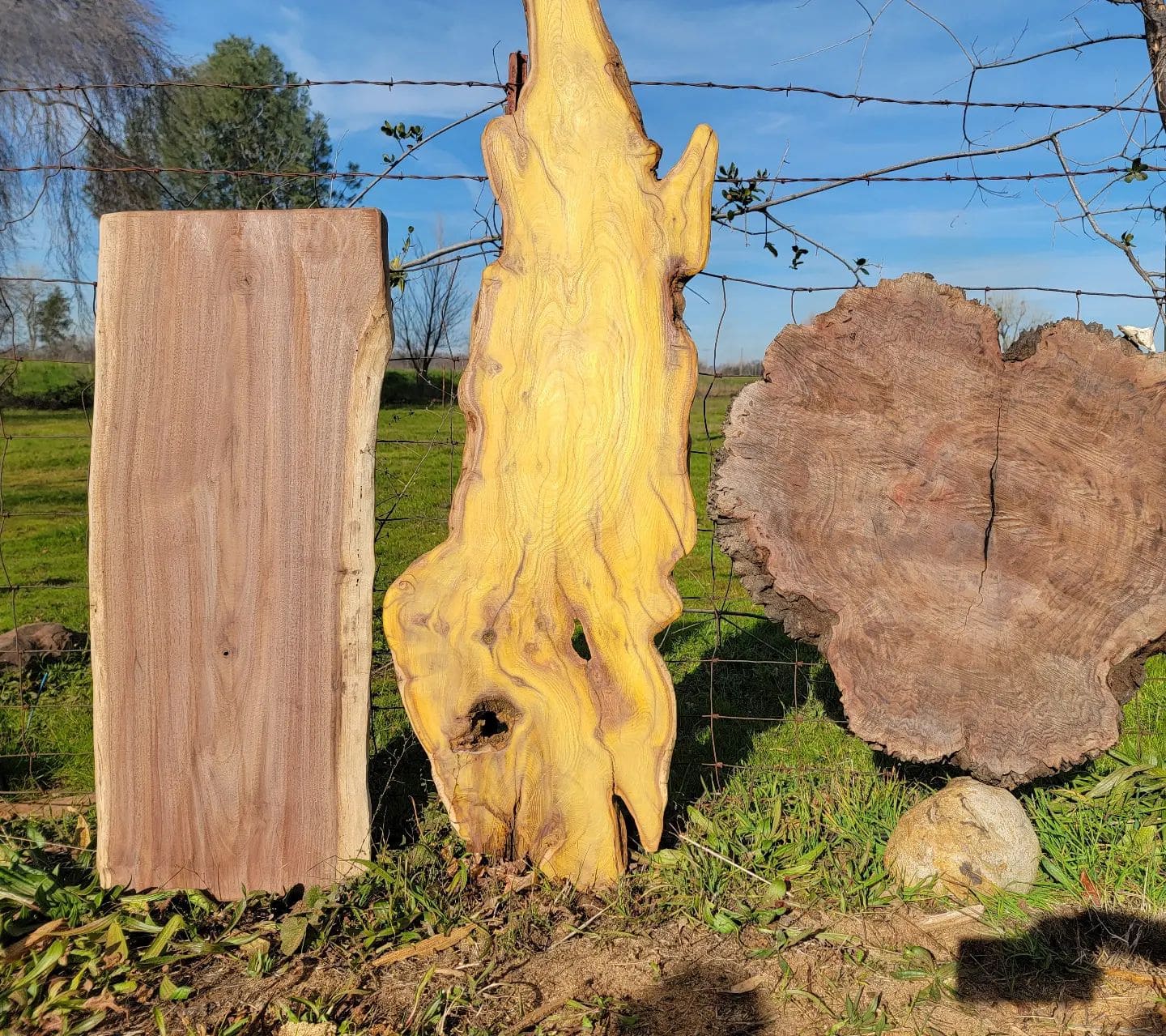
The wood turns astonishingly yellow when you are working with it but gradually turns into golden brown. Mulberry woodwork reduces the cost of artificial color required to polish the wood surface. The wood’s ability to gradually attain its natural color, which looks both tan and attractive with a smooth finish, is a plus point.
Rot Resistance
Insects and pests aren’t easily attracted to the mulberry wood as it imparts no characteristic odor. The wood instead soaks in the fruity essence of the berries, which it imparts during burning. Resistance to rot is in itself a great relief for woodworkers, which brings along advantages of long-term storage and durability.
Gluing Property
The large pores of the wood are advantageous for wood turning, thus supporting its gluing property. The ability to form varied designs on the edges of containers and bowls adds value to the piece.
Woodturning Property
The exceptionally lightweight mulberry wood would be an excellent choice for ones trying to purchase their first chainsaw mill or begin woodturning. Unlike many other woods that dull your blade rather quickly, mulberry wood requires minimal effort and time to get the wood turned.
Mulberry Wood Uses
Of the many ways the versatile mulberry wood can be put to use, the following are the major ones:
Furniture Use
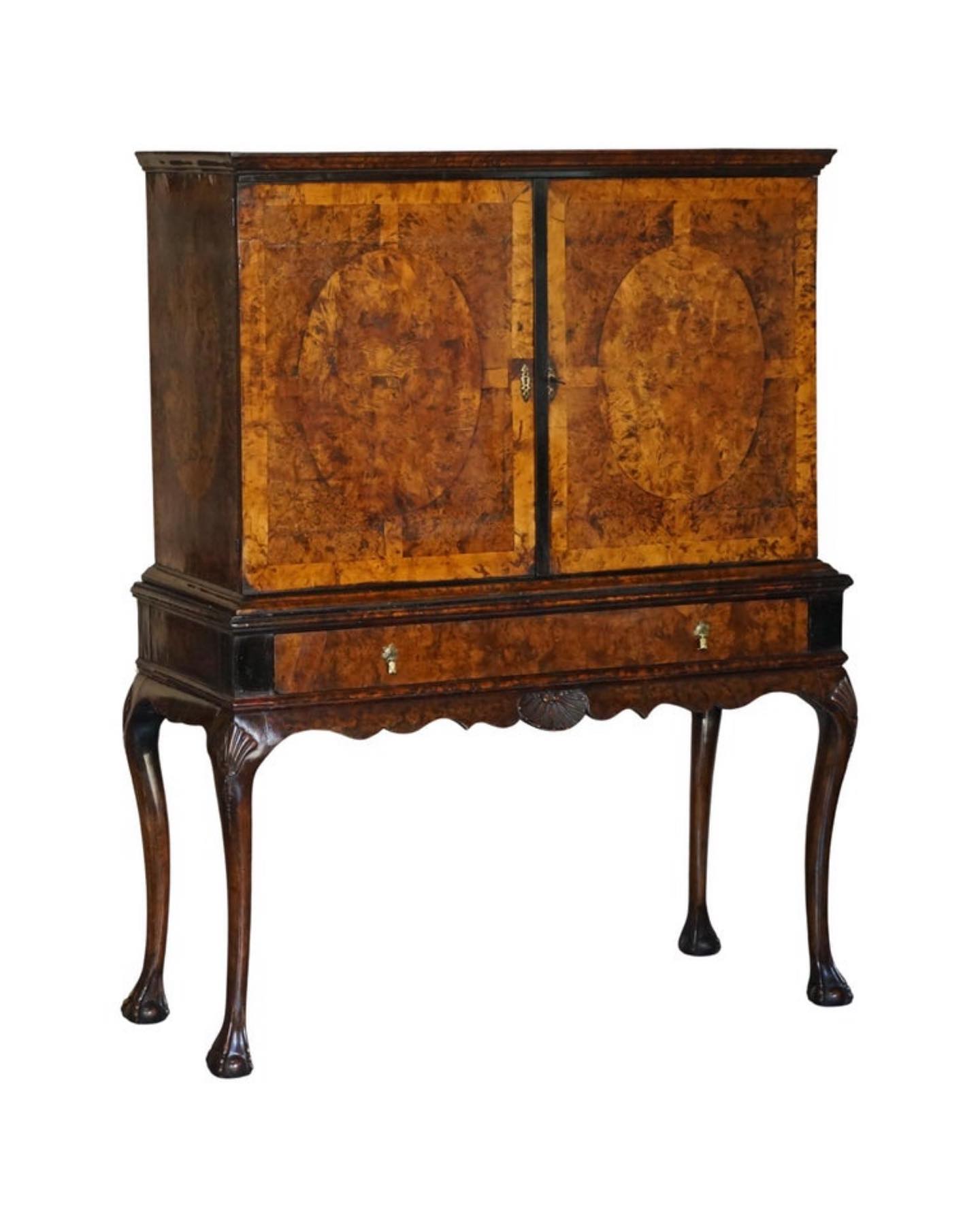
Wood from mulberry trees is used to prepare frame and panel work, especially for contrasting elements and inlays on furniture. Also, the huge boards produced by tall mulberry trees make it a popular choice among the speciality shops that make furniture.
Garden and Yard
If you’re wondering about the best wood to prepare fence posts for your balcony and gardens, mulberry is the right choice. Coppiced mulberry yields fairly straight, strong poles that can be used for stakes and tree props.
Trinkets, Pens, and Baskets
The convenience of working with mulberry wood has made it a go-to wood for making items from small pens, trinkets, and paper to larger embellished pieces. The lower density and hardness of mulberry wood is ideal for carving and weaving baskets out of the thin branches. Mulberry wood would be a great option for projects demanding any kind of detail work.
Curvy Wood Designs
The active gluing property allows its usage in making spinning objects. Mulberry wood makes attractive natural-rimmed bowls. Turned objects like bowls, baskets, pots, and containers made of mulberry wood are not only durable but also appealing to the eyes.
Timber for Fire
Mulberry wood burns slowly and steadily and can provide warmth for a long time for cooking and campfire purposes. The high heat output of Mulberry firewood is comparable to Maple and Red Oak. The fruity essence of the smoke and coals makes it stand out.
Smoking and Grilling
Mulberry wood is one of those woods that you can use to impart flavor on your meat while grilling. It is best suited for smoking fish, pork, and poultry. The smoke you get upon burning mulberry wood is sweet and similar to apple wood.
Things to Consider While Working with Mulberry Wood
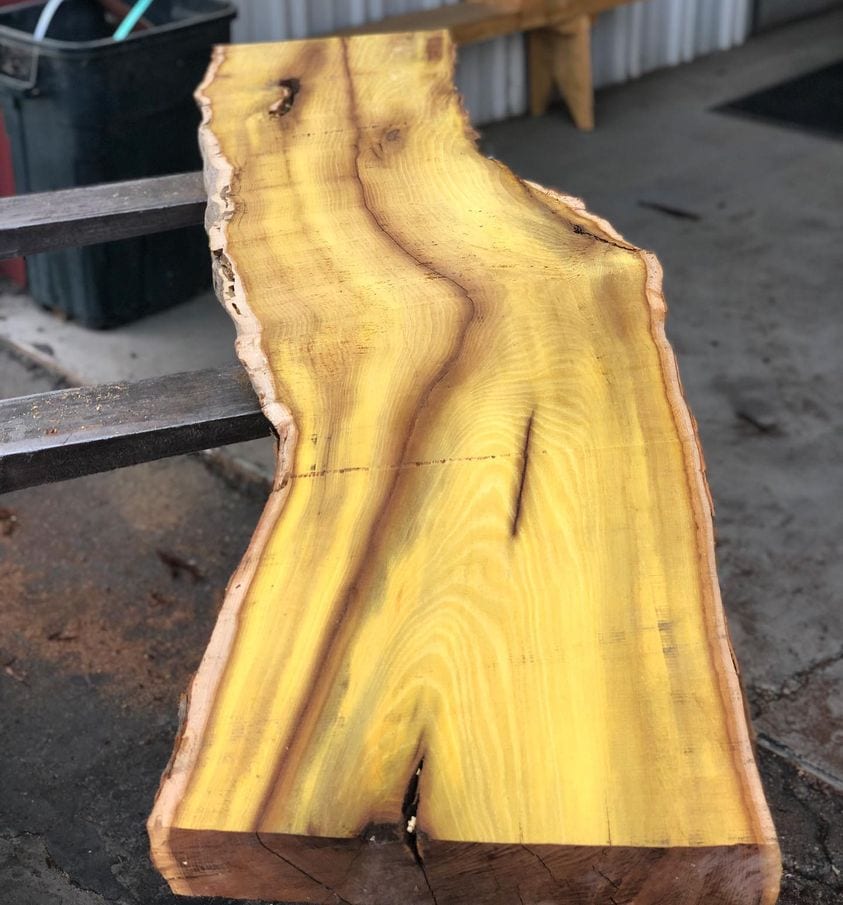
Although mulberry is considered the best option for woodturning purposes, it’s important to note that this holds true only when the sapwood is creamy and fresh. This is because the color turns amber to dark brown when exposed to sunlight.
When choosing a firewood option it is necessary to remove the bark before stacking it up as bark ignites easily, which may result in the burning of the entire pile. It is not recommended in places with a high risk of fire.
While the fruity essence of the smoke is praiseworthy, mulberry wood is recommended for outdoor camping rather than indoors due to the harsh sparks and pops it produces on burning. Also, it is important to note that the wood is properly dried before burning.
The time required for mulberry wood to dry after harvest ranges from 6 to 12 months depending upon the wood, the thickness of the boards, and the method used for drying. When mulberry is a part of your project, proper planning is the key. Stacking up mulberry poles into 20 to 30 inches sections before drying can hasten the process.
Cutting with a sharp blade is of immense necessity to ensure the chainsaw blades are not blunted quickly from contact with the bark.
Mulberry wood density is comparatively lower, making it difficult for a single person to cut through it. A helping hand is always recommended for convenience in working with wood.
Mulberry can also be stained and treated to make it appear like other types of wood, such as maple, walnut, or oak, when needed.
How to Work with Mulberry Wood
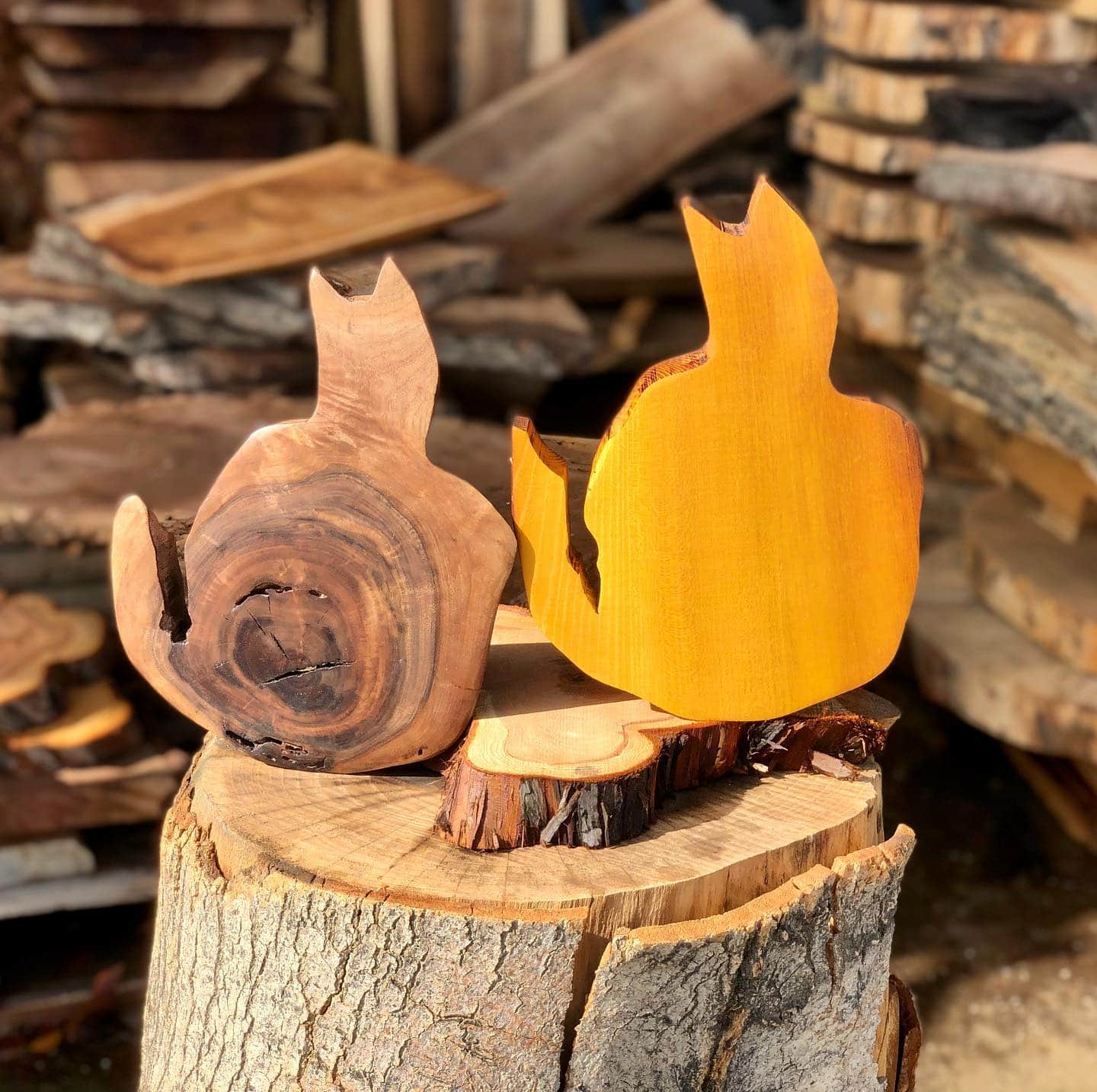
The average moisture content of mulberry wood is 30%. Generally, after the harvest, letting mulberry woods dry naturally would be the best option. However, consideration is required for large pieces of mulberry wood that are not thin enough to allow airflow. In that case, kiln drying might be a better option.
Well-seasoned wood produces less smoke and sparks. Therefore, seasoned wood is preferable for firewood purposes, before which thorough drying for at least 12 months is mandatory. If possible, drying up to 18 to 24 months is recommended for a hotter and cleaner fire.
Frequently Asked Questions (FAQs)
Question: Is the Mulberry tree also referred to as Black locust?
Answer: The mulberry tree is sometimes confused for the Black Locust or the Osage Orange. They can be differentiated by using blacklight in both trees. Black locust shows high fluorescence under a black light, while the Mulberry tree doesn’t.
Question: How does the color of Mulberry wood change over time?
Answer: The heartwood of mulberry wood is initially golden brown and darkens into a reddish brown with time due to exposure to ultraviolet radiation. The same happens to the sapwood, which is initially white but later changes to a pale-yellow tint.
Question: Why is mulberry wood expensive, given its cosmopolitan nature and wide adaptability?
Answer: The mulberry tree is primarily used as a source of food for the silkworms and the harvest of its edible fruits. Although widely available, it is not normally harvested for its lumber. Its small size and scattered distribution cause difficulty in lumbering operations, making it one of the most expensive woods in the world.
Question: Can I distinguish between mulberry trees based on the fruit color?
Answer: The color of the fruit does not help in its distinction since different trees will produce various fruit colors. White mulberries can produce white, lavender, or black fruit, while red mulberries produce both red and black fruits.
Question: How do I know if the wood is mulberry?
Answer: The mulberry wood log has a red color in the center with a light brown outer ring. White streaks of the outer bark with small, jagged leaves that grow individually in an alternative pattern help in its identification.
Question: Is mulberry a good choice for making high-end furniture?
Answer: For anything that requires sanding and finishing, maple, oak, or pine tree would be a better option as mulberry wood tends to splinter and warp. Also, finding wood pieces large enough to mill with a chainsaw mill would be challenging.
Conclusion
The versatile mulberry tree not only offers us fruits and leaves but also provides us with plenty of woodworking options. Considering mulberry as a lumber and timber option has a series of advantages associated with it. Woodworkers can rely on it for woodturning, designing pieces of furniture, or crafting small trinkets. It can also be a campfire option for us as travelers exploring the woods. It’s time to befriend the mulberry wood and the benefits it offers, just like the absolute love we have for the silk items in our wardrobe.
Research Citations
Mohebby, B., Yaghoubi, K., & Roohnia, M. (2007, October). Acoustic properties of hydrothermally modified mulberry (Morus alba L.) wood. In Proceedings of The Third European Conference on Wood Modification (pp. 283-286).
Cavus, V. (2021). Weathering performance of mulberry wood with UV varnish applied and its mechanical properties. BioResources, 16(4), 6791.

